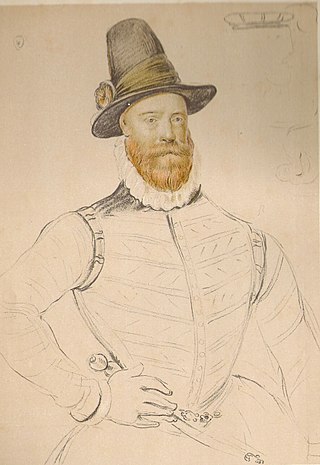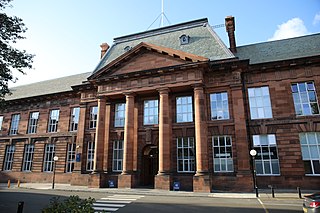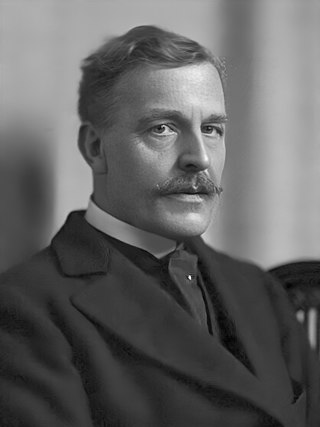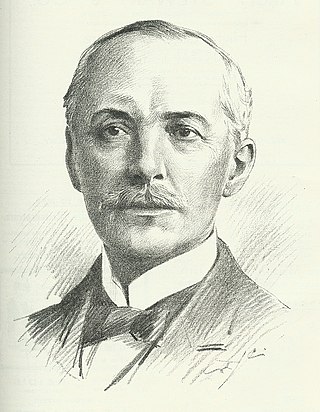
The Scottish National Gallery is the national art gallery of Scotland. It is located on The Mound in central Edinburgh, close to Princes Street. The building was designed in a neoclassical style by William Henry Playfair, and first opened to the public in 1859.

James Douglas,4th Earl of Morton was the last of the four regents of Scotland during the minority of King James VI. He was in some ways the most successful of the four, since he won the civil war that had been dragging on with the supporters of the exiled Mary, Queen of Scots. However, he came to an unfortunate end, executed by means of the Maiden, a predecessor of the guillotine.

The Battle of Solway Moss took place on Solway Moss near the River Esk on the English side of the Anglo-Scottish border in November 1542 between English and Scottish forces.

The Company of Scotland Trading to Africa and the Indies, also called the Scottish Darien Company, was an overseas trading company created by an act of the Parliament of Scotland in 1695. The Act granted the Company a monopoly of Scottish trade to India, Africa and the Americas, similar to English charter companies' monopolies, and also extraordinary sovereign rights and 21 years of exemptions from taxation.

The Royal Company of Archers, The King's Bodyguard for Scotland is a ceremonial unit that serves as the Sovereign's bodyguard in Scotland—a role it has performed since 1822 during the reign of King George IV when the company provided a personal bodyguard to the King on his visit to Scotland. It is currently known as the King's Bodyguard for Scotland or, more often and colloquially, The Royal Company. It is located in Edinburgh, the capital city of Scotland. The Royal Company of Archers has a long history in Scotland as a body that celebrated both the recreation and talent of local archers. As a body established by the Monarch, the company has a long history of unique prizes, influential supporters, and ceremonial roles. It has an associated charity, "The Royal Company of Archers Charitable Trust", dedicated to helping disadvantaged individuals with their health and wellbeing in Scotland.

Edinburgh College of Art (ECA) is one of eleven schools in the College of Arts, Humanities and Social Sciences at the University of Edinburgh. Tracing its history back to 1760, it provides higher education in art and design, architecture, history of art, and music disciplines for over three thousand students and is at the forefront of research and research-led teaching in the creative arts, humanities, and creative technologies. ECA comprises five subject areas: School of Art, Reid School of Music, School of Design, School of History of Art, and Edinburgh School of Architecture & Landscape Architecture (ESALA). ECA is mainly located in the Old Town of Edinburgh, overlooking the Grassmarket; the Lauriston Place campus is located in the University of Edinburgh's Central Area Campus, not far from George Square.

The Royal Scottish Academy (RSA) is the country’s national academy of art. It promotes contemporary Scottish art.

Sir James Guthrie was a Scottish painter, best known in his own lifetime for his portraiture, although today more generally regarded as a painter of Scottish Realism.

Dollar Academy, founded in 1818 by John McNabb, is an independent co-educational day and boarding school in Scotland. The open campus occupies a 70-acre (28 ha) site in the centre of Dollar, Clackmannanshire, at the foot of the Ochil Hills.

The Royal Commission on the Ancient and Historical Monuments of Scotland (RCAHMS) was an executive non-departmental public body of the Scottish Government that was "sponsored" [financed and with oversight] through Historic Scotland, an executive agency of the Scottish Government.

Sir John Maxwell Stirling-Maxwell, 10th Baronet, KT, DL, FRSE was a Scottish landowner, Tory politician and philanthropist.

Sir John James Burnet was a Scottish Edwardian architect who was noted for a number of prominent buildings in Glasgow and London. He was the son of the architect John Burnet, and later went into partnership with his father, joining an architectural firm which would become an influential force in British Modern architecture in the 20th century.

Sir George Washington Browne was a Scottish architect. He was born in Glasgow, and trained there and in London. He spent most of his career in Edinburgh, although his work can be found throughout Scotland and beyond. He was involved in nearly 300 projects, including many public and commercial buildings. One of his most notable buildings is Edinburgh's Central Library, and he became recognised as an authority on library planning and design. He came to national attention after winning a competition to design a bridge over the River Thames in London, although this was never realised. He was the first architect to be elected as President of the Royal Scottish Academy. He also served as President of the Edinburgh Architectural Association, and was instrumental in setting up the Royal Fine Art Commission for Scotland.
The New Year Honours 1987 were appointments by most of the Commonwealth realms of Queen Elizabeth II to various orders and honours to reward and highlight good works by citizens of those countries, and honorary ones to citizens of other countries. They were announced on 31 December 1986 to celebrate the year passed and mark the beginning of 1987 in the United Kingdom, Australia, New Zealand, Barbados, Mauritius, Fiji, Grenada, Papua New Guinea, Tuvalu, St Lucia, St Vincent & The Grenadines, Belize, Antigua & Barbuda, and St Christopher & Nevis.
Queen's Birthday Honours are announced on or around the date of the Queen's Official Birthday in Australia, Canada, New Zealand and the United Kingdom. The dates vary, both from year to year and from country to country. All are published in supplements to the London Gazette and many are conferred by the monarch some time after the date of the announcement, particularly for those service people on active duty.

Sir George Macdonald was a British archaeologist and numismatist who studied the Antonine Wall.
The 1913 Birthday Honours were appointments in the British Empire of King George V to various orders and honours to reward and highlight good works by citizens. The appointments were made to celebrate the official birthday of The King, and were published on 3 June 1913 and 6 June 1913.
Charles d’Orville Pilkington Jackson RSA, FRBS, FRSA was a British sculptor prominent in Scotland in the 20th Century. Throughout his career he worked closely with the architect Sir Robert Lorimer. He is most noteworthy for his creation of one of Scotland’s most iconic landmarks, the statue of Robert the Bruce at Bannockburn.
The 1928 New Year Honours were appointments by King George V to various orders and honours to reward and highlight good works by citizens of the United Kingdom and British Empire. They were announced on 30 December 1927.













